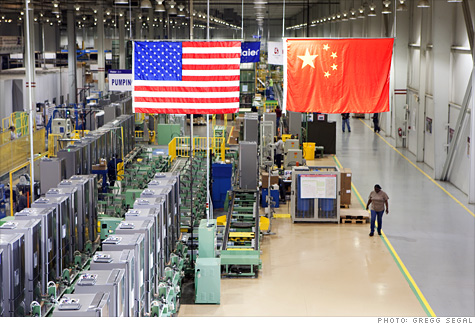China's economic planners make U.S. czars look like pikers

For those individuals who see a heavy hand in every regulatory move by the U.S. government, here’s an example of the true sledge hammer approach to environmental management:
China has cracked down on inefficient manufacturing plants by ordering them shut down. If they fail to close their doors per the government’s demands, the power will be shut off. According to the New York Times, “The Ministry of Industry and Information Technology quietly published a list late Sunday of 2,087 steel mills, cement works and other energy-intensive factories required to close by Sept. 30.” Now, that’s environmental activism.
The plant owners and local communities are making the same arguments that American businesses leverage against what they consider onerous environmental requirements. The difference between us and them: the government doesn’t care what their constituents think. They are taking a hard line – it’s their way or the highway.
The parallels with California’s AB 32 effort are striking. The Chinese five year plan (2005-2010) called for a 20 percent reduction in energy use. As the deadline approached, many of the most energy-hogging plants had become busier than ever, and showed no interest in “fixing what isn’t broken” about their energy usage. But the Chinese version of an "Energy Czar" that was tasked with meeting the five year goal simply put the hammer down and said “no way.”
In California, Governor Schwarzenegger wants his legacy to reflect similar achievements in energy conservation – albeit, the required reductions are in non-renewable fuels, not in overall energy consumption. AB 32 calls for a 33 percent reduction in non-renewable fuel usage by 2020. But the democratic style of American bureaucracy provides near veto power to groups with enough influence or money to lobby for their case.
So, instead of announcing draconian means to achieving AB 32’s goals, we announce debating procedures and compromise opportunities. Sustainablebusiness.com news reported on June 25 that:
“the future of AB 32 is in question. California's secretary of state, Debra Bowen, this week certified a ballot measure for the November 2 general election that would suspend the ground-breaking law until unemployment drops below 5.5% for four consecutive quarters (currently over 12%).”
The Chinese will have none of that voting rubbish stand in the way of what will “enhance the structure of production, heighten the standard of technical capability and international competitiveness and realize a transformation of industry from being big to being strong.”
However you view the concept of nationwide industrial planning, it’s hard to argue that the Chinese are choosing long-term benefits over short-term results. Meanwhile, the United States has lost its manufacturing edge because we allowed our factories to stagnate rather than finding ways to invest in their future. It became easier to switch our focus from making things to manipulating money as the core of America’s success.
And look where that got us.
It’s hard to imagine a better example of environmentalism leading to a positive impact on future economic success than the Chinese actions. Of course, it’s also true that China has not suffered an economic meltdown quite as long-lasting as ours (although the Shanghai market is now down 29% since its November '09 post-crash high); nor is it suffering from the unemployment dislocation that we have experienced.
So, our fear of the negative impact of taking tough environmental actions is understandable. And no one wants to emulate the level of government control that is common in the Communist world.
But, the dissension that comes with any recommended, legislated or regulated change in our American processes begins to look weak-kneed in light of the heavy hand of China’s bureaucrats.
Do we have a five-year plan?
Do we need one?




